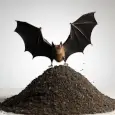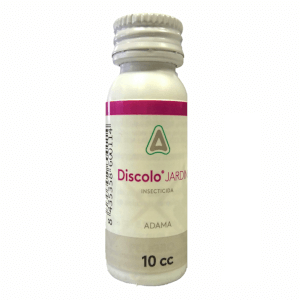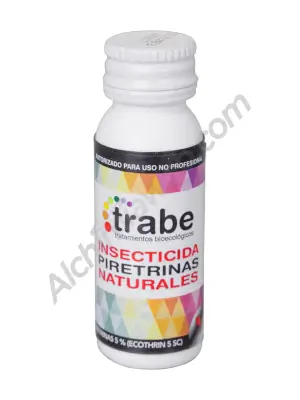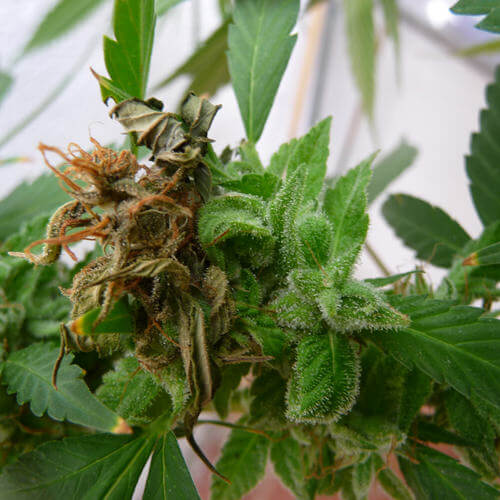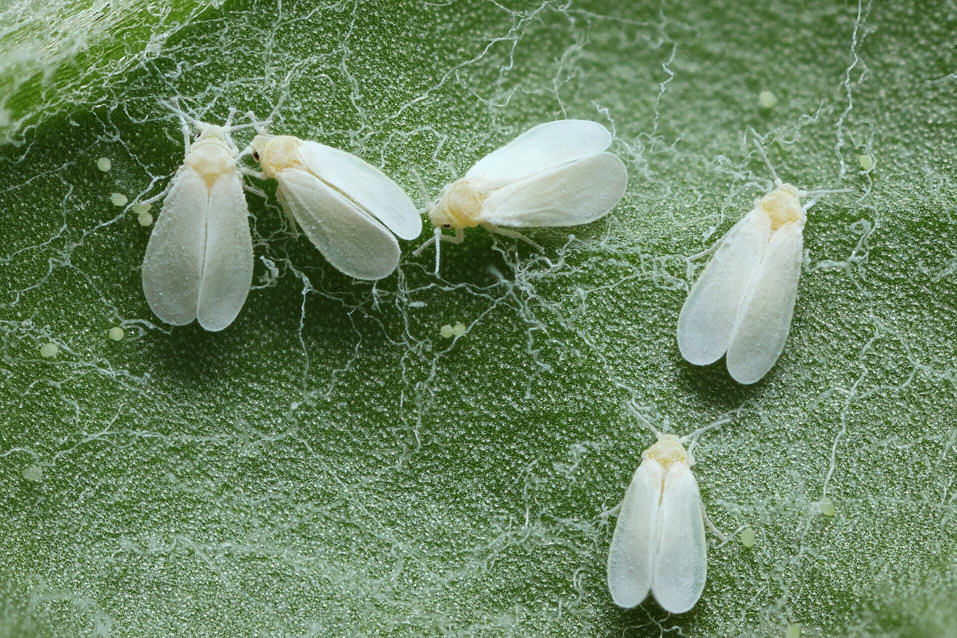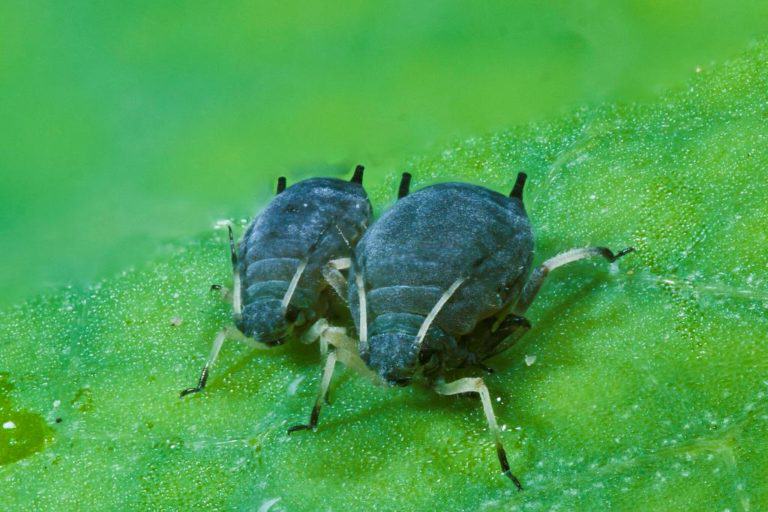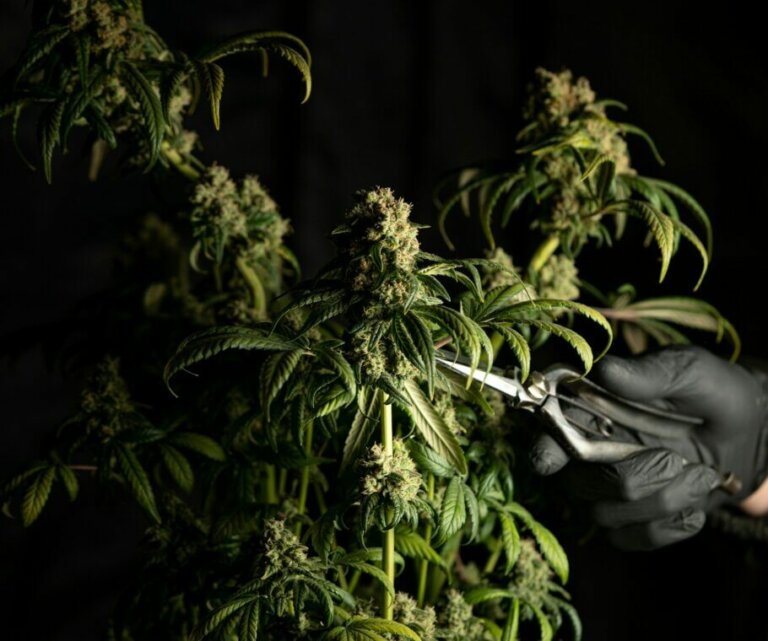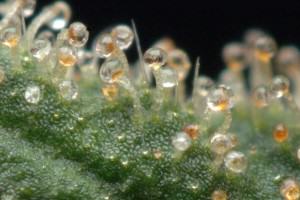Caterpillars on Marijuana Plants
List of contents
During the outdoor cannabis growing season many insects feed on our marijuana plants and can ruin the efforts of the last few months. In this article, we want to invite you to explore one of the most common and annoying pests that outdoor cannabis growers can face: caterpillars.
These small larvae can wreak havoc on cannabis crops, not only voraciously devouring leaves, buds, and flowers, but also promoting the appearance of the dreaded botrytis in those areas damaged by their bites. If you want to know how to protect your cannabis plants to obtain a successful and smooth harvest, today we will tell you everything you need to know about the prevention and control of this devastating pest.
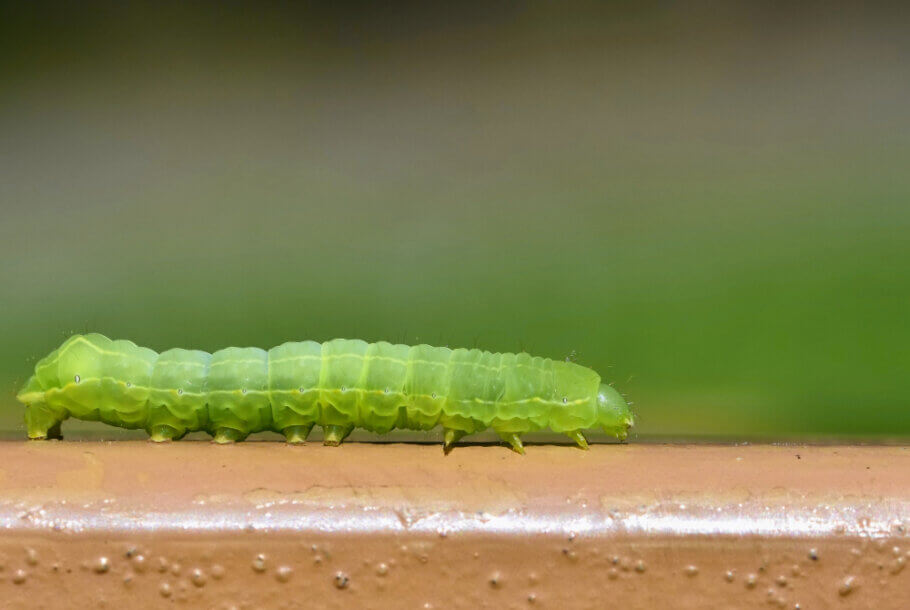
What is a caterpillar?
Caterpillars are the larvae of insects from the Lepidoptera family, better known after their metamorphosis as beautiful butterflies. Many species of butterflies can be found around the world so there will also be many different types of caterpillars, with variable colors and sizes but, yes, they all have clear characteristics in common, such as the segmented body, the 6 legs, or the hooks of the pseudolegs.
Before finding a caterpillar on our marijuana plants, we will see how butterflies land on the buds or leaves, generally in the highest parts where the largest and most unreachable buds are located. The butterfly will lay its eggs before the winter season arrives; These eggs will hatch when the environmental temperatures are the most suitable, needing the heat of the end of summer which coincides with the arrival of winter in two months. It is very feasible, but butterflies lay their eggs and they do not hatch until the right conditions are met.
The caterpillars have a long body divided into segments with varied colors, generally adapted to camouflage themselves among the vegetation to avoid being eaten by birds or other natural predators of these insects. They move using their 6 main legs along with the 10 "false" legs spread along their body, which can vary in position depending on the type of caterpillar in question.
These voracious predators of green matter do not breathe through their mouths but do so through small holes that are distributed along the body of the insect called spiracles. These holes lead to a network of internal tubes or tracheas that connect to each other, providing oxygen directly to the cells, making it a very effective and spectacular respiratory system.
Their senses, such as sight, and smell ... are not very developed, sight is very reduced and limited, it is made up of 6 small eyes spread across the face in the shape of a horseshoe that are located in the lower part of the head. They use their antennae as a food detector using their powerful jaws to quickly devour leaves, buds, small stems, etc.

How to detect caterpillar attack on cannabis plants
We have explained that butterflies will leave their eggs on the leaves of plants, but we have not mentioned that these leaves will be the first vital source of food for the newborn caterpillars. It should be said that not all caterpillars prefer the same type of leaf, so we can find different versions of caterpillars in cannabis. However, if it is grown in the same geographical location it will almost always be the same type of caterpillars, belonging to the same species.
First of all, we must observe the leaves precisely, looking at those leaves or buds that are in the highest parts of the plants, where butterflies lay their eggs. At first glance it is really difficult to see the eggs, but if we look closely they can be seen as small sets of dots that take on a different color (white/yellow) and shape (round or oval) depending on whether it is a type of egg. butterfly egg or other.
After this initial inspection and already in the flowering season, we must look at the buds, starting at the top to going down little by little looking at the rest of the plant in search of small black, gray, or brown remains. The flowers that will be attacked first will be those that have a large but not extremely compact bud, so that they can move through the middle, devouring the softer tissues such as the small branches that make up the beginning of the bud.
In the case of finding a caterpillar, we must inspect the entire plant daily, especially during those hours when the sun is lower and the ambient humidity is higher, although it is very easy to find it eating non-stop the rest of the day since its hunger is insatiable and voracious.
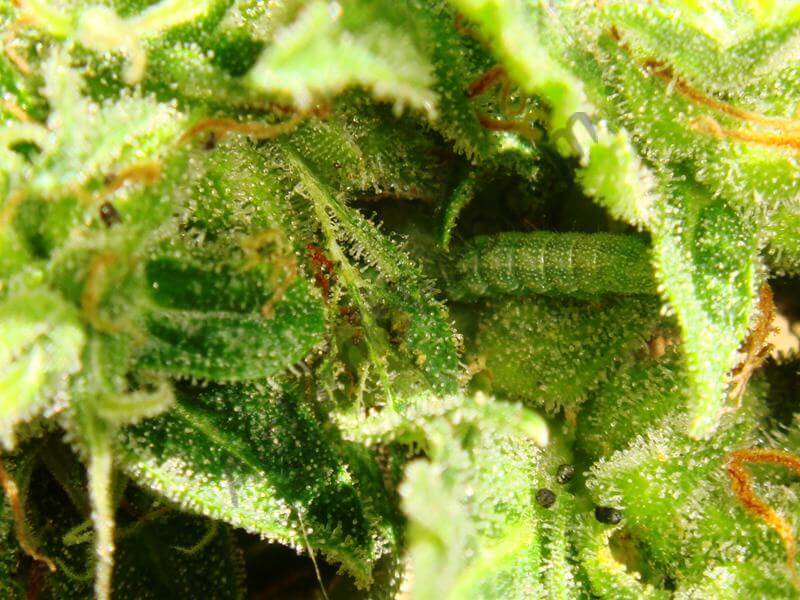
How to act to prevent or eradicate caterpillar pests?
After carrying out an exhaustive search on our plants, what we should do if we have detected a caterpillar or observed bitten buds on the plants is to apply a product that repels or kills butterfly eggs and larvae.
These products are generally created based on a gram-positive bacillus such as Trabe's Cordalene, which is found naturally in soil and plants. Such products are specifically created to treat the plague of lepidopteran larvae with greater or lesser effectiveness depending on the type of larva to be treated, always offering great results.
We can also treat the plants with broad-spectrum products to be able to control part of the caterpillars and other possible pests that may occur at the same time. In this case, the Mittel Concentrate could be applied at a dosage of 1ml/l. When butterfly larvae eat the plant matter treated with the product, they will become poisoned and die to leave the plant free of intruders.
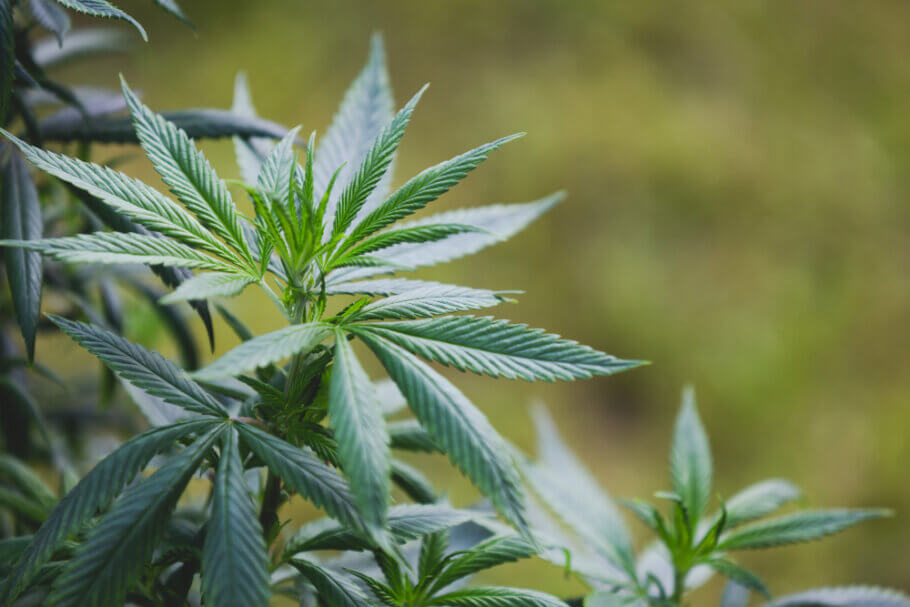
Another product with which we can treat caterpillars and other types of insects of different kinds, all of which are sucking, is the Trabe Tec-Fort insecticide, which contains pyrethrins as an active ingredient, which acts by contact, leaving cannabis plants free of insects. . In this case the caterpillars would be eliminated from the plants, leaving them clean to continue flowering without mishaps.
It should be noted that all the mentioned products are biodegradable and biological so that they can be used several times when required as a preventative or to eradicate caterpillar pests. The safety period is relatively short but it is recommended and it is important not to apply the product during the last 15 days before harvesting the cannabis plants to give time for the treatment to not leave traces of its product on the buds.
Even so, and as always, we recommend that you follow a strict prevention program already during the last weeks of the growth phase, as you will greatly increase the chances of not having problems with caterpillars during the flowering stage, when you do not want to walk around spraying your plants with phytosanitary products.
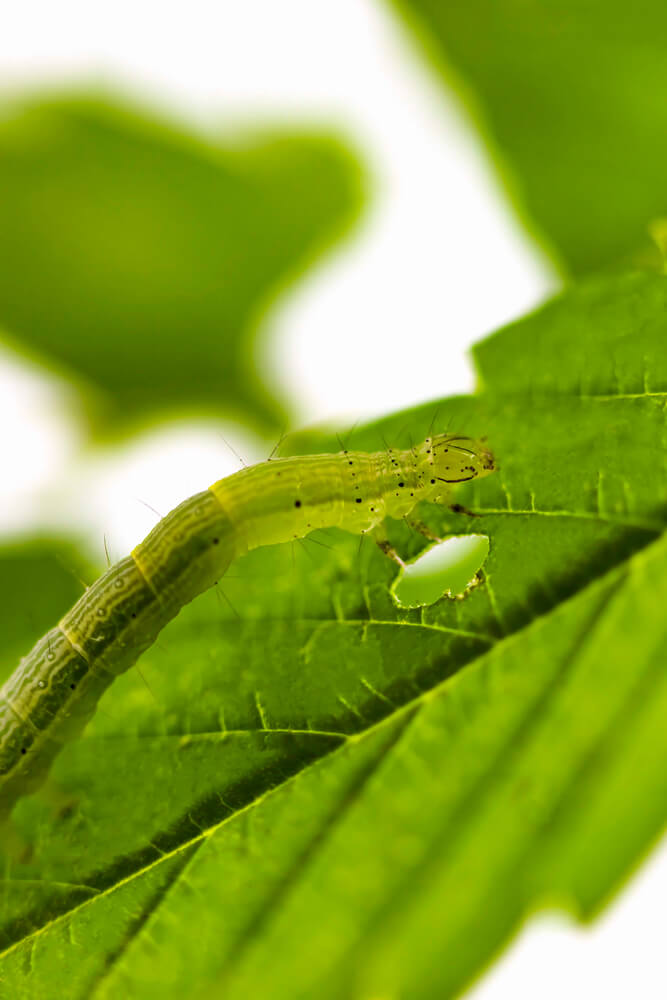
Caterpillar infestation just before harvesting
In the event that the pest appears in these last 15 days, we will have to carry out exhaustive monitoring day by day, observing the plants, and opening the buds very carefully to see if the caterpillars are hiding among their flowers.
If we do not proceed in this way, it is very feasible to harvest the plants with the largest buds clearly affected or even to throw them away because they become unusable due to the bites of the caterpillars and their defecations, which also cause the appearance of molds such as botrytis.
If you have plants affected by botrytis, you can treat them as long as you are not present in the last 15 days before harvest. If it is at the end of flowering, it is best to look at the state of the trichomes and if they are mature enough we can harvest the plants. If the infection is mild, do not hesitate and remove the affected parts, otherwise, the fungus can spread quickly.
Once harvested, and immediately, we must proceed to remove any infected part from the rest that is still healthy, if we have not already done so. If we do not separate these parts from the fungus, it will spread until it ends up rotting the entire bud, even during drying, since it requires a few days to lose much of the moisture it contains in its metabolism.
What is Botrytis or Gray Mold?
What is botrytis or gray mold? Which are the symptoms and how to avoid this fungal attack? Are there any strains especially resistant to botrytis? In this post you'll find all the iformation on this fungus, a common pest in cannabis plants.
Post-harvest precautions for caterpillars
After harvesting the plants, we must hang the plants upside down to dry the cannabis. In this way, the plants lose their humidity and are no longer a good hiding place for caterpillars that may have survived the purging carried out by hand.
These caterpillars will leave the plant to continue their course and become butterflies so that just when we can see the plants drying out, we can see the caterpillars hanging from the bud "abseiling" until they reach the ground.
Once they reach the ground, they will quickly look for other sustenance to be able to feed themselves and continue with their vital process, so it is important to recover these caterpillars to prevent them from filling our house with cocoons and later with butterflies since they become embedded in the most hidden corners. implausible and generally difficult to access.
Recommendations for cultivation without caterpillars
- Observe the butterflies settled on the plants
- Look for eggs in the leaves
- During flowering, check the buds for signs of bites
- If detected, act by applying Biothur or another insecticide compatible with caterpillars
- Stop applying the product within the last 15 days
- Check the plants and buds after harvest and remove infected or bitten parts
- Collect the caterpillars that emerge if you cannot apply the product
Happy harvest!
















































